Cranes are a unique family of birds loved by people. They are tall and slender, elegant in behavior and produce striking calls. In diverse regions and cultures, cranes have special meanings. For example, in China, cranes represent auspiciousness and longevity, while Indigenous Australians regard cranes as beautiful dancers. In Western Zambia, for the Lozi people, the Queen’s barge has a statue of a Grey Crowned Crane, or Liowanyi, symbolizing royalty. In Uganda, the Grey Crowned Crane is the national bird and symbolizes bravery.
Cranes also are symbols, or indicator species, in the natural environment of healthy wetland ecosystems. However, cranes are highly vulnerable to illegal hunting and habitat destruction, which makes them one of the rarest and most endangered bird families. More than half of the world’s 15 crane species are threatened.
Most cranes migrate across countries and regions, so protecting them and their habitats requires the commitment of people from diverse regions, cultures and countries. The International Crane Foundation works on crane research, conservation and education in more than 50 countries, bringing people together to help protect cranes and their habitats.
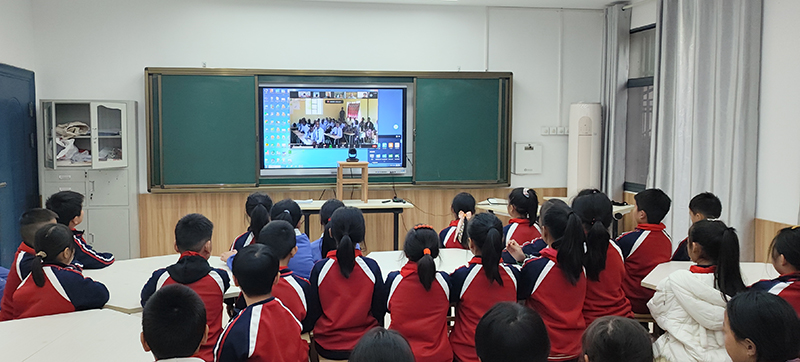
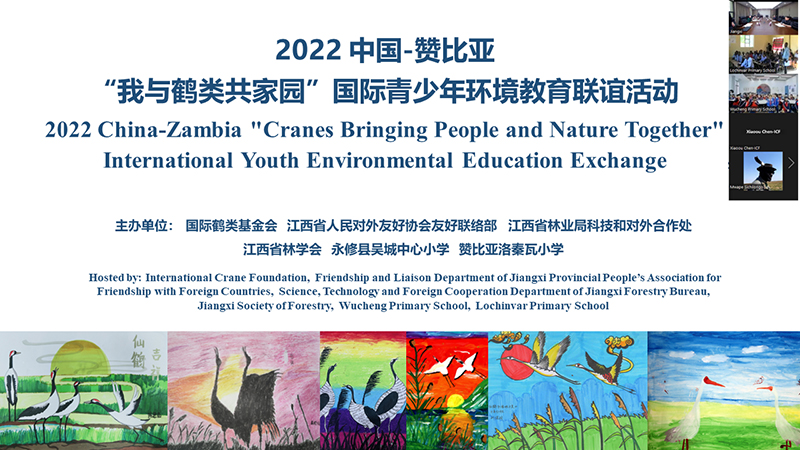
The 2022 “Cranes Bringing People and Nature Together” International Youth Environmental Education Exchange was organized on November 18 by the International Crane Foundation for the students from Wucheng Primary School in Jiangxi Province, China and Lochinvar Primary School in southern Zambia. The exchange was supported by the Jiangxi Provincial People’s Association for Friendship with Foreign Countries, Jiangxi Provincial Forestry Bureau, Jiangxi Provincial Forestry Society, Monze District Education Board Secretary Office, and the Department of National Parks and Wildlife and Department of Fisheries.
During the welcome ceremony, students from Wucheng Primary School read the Tang Dynasty poems, Song of Autumn and Yellow Crane Tower, to the Zambian students, while students from Lochinvar Primary School recited their poems about cranes. Listen to the poems here:
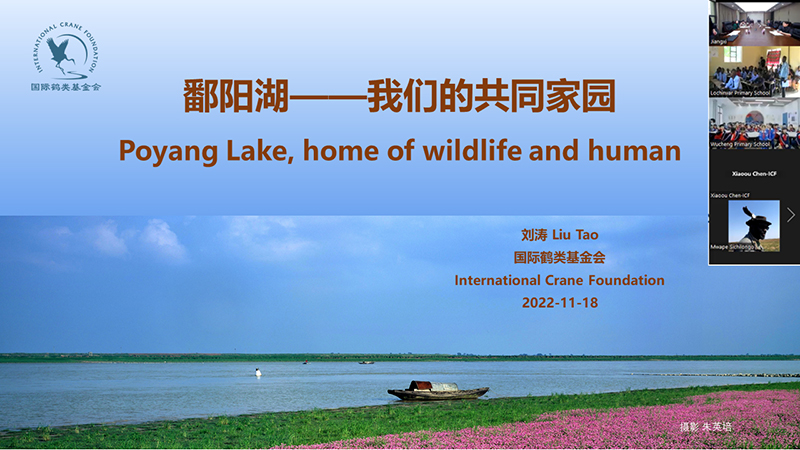
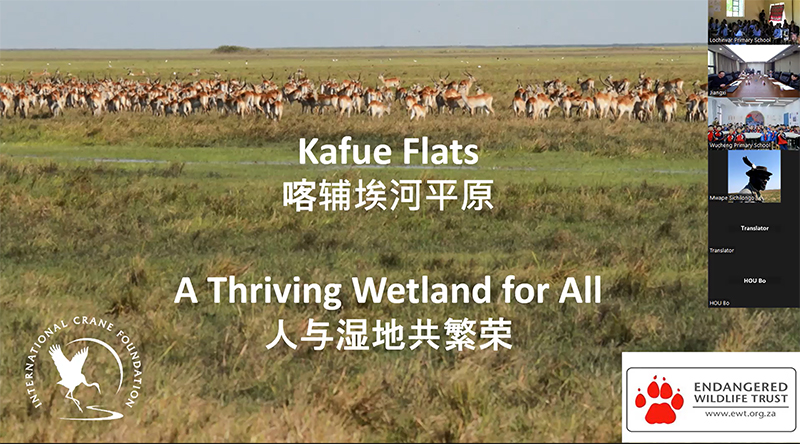
During the interactive session, the Chinese and Zambian students introduced and shared their paintings and greetings on the theme of cranes. They also asked and answered questions from each other and showed each other the cranes in their hometown. At the end of these activities, the Zambian students performed cheerful and traditional songs and dances, while the Chinese students performed the song Gratitude.
Students from both countries welcomed the activity. “I like it very much. It gives us a chance to communicate with Zambian friends, and we performed for each other,” said Zeng Yiming, a student from Wucheng Primary School. Tao Shiyu, another student at Wucheng Primary School, was impressed by the Zambian students’ dancing. “I like their dancing, they danced very happily, and it was fun.”
Organizing international environmental education exchange activities on the theme of crane conservation will help improve the public’s awareness of protecting cranes and wetlands and also will help promote exchanges between countries in nature conservation and cultural communication. Gan Zilong, a teacher from Wucheng Primary School, said, “the activity helped the students learn more about the cranes in their hometown. I hope more crane conservation activities can be organized between the two countries to expand students’ horizons.”
Connecting Through Art
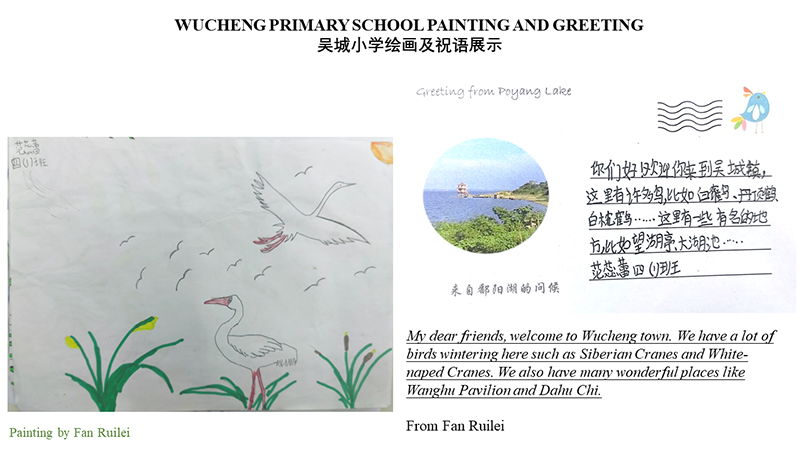
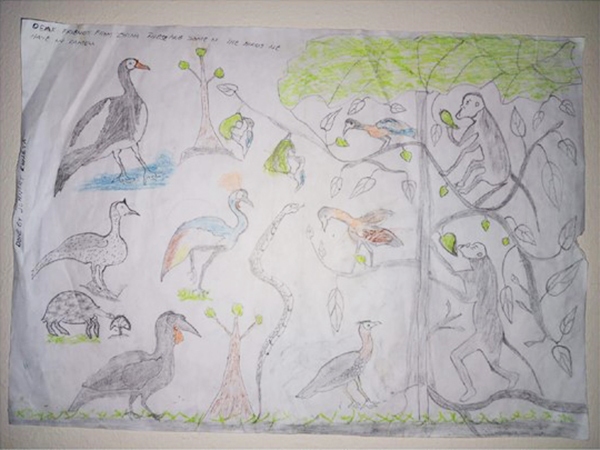
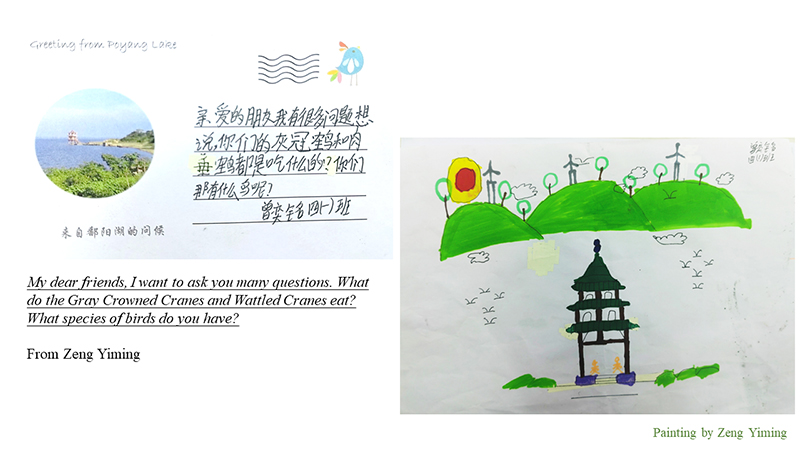
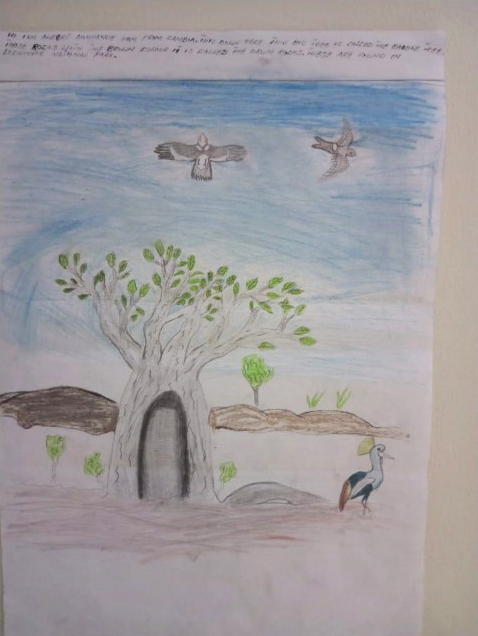
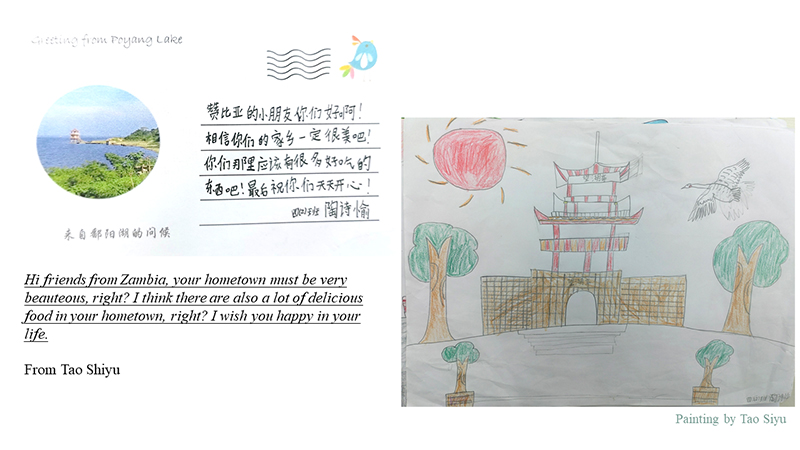
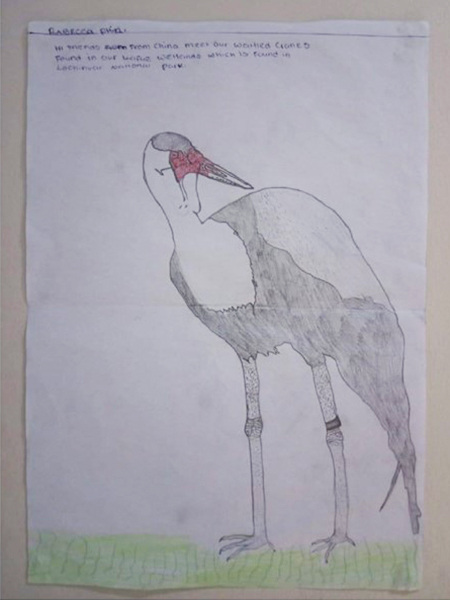
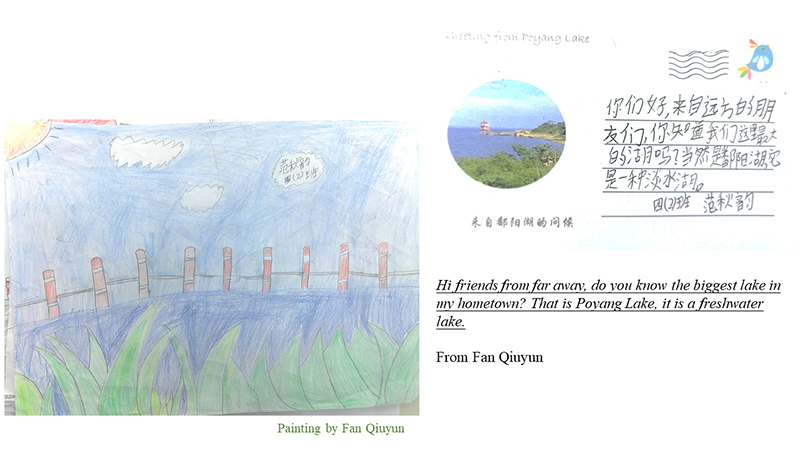
Story by Environmental Education Officer Liu Tao, Poyang Basin Program Manager Jin Jiefeng, China Program Coordinator Hou Bo, Community Relations Manager David Banda, and Volunteer Zheng Ruixing.
